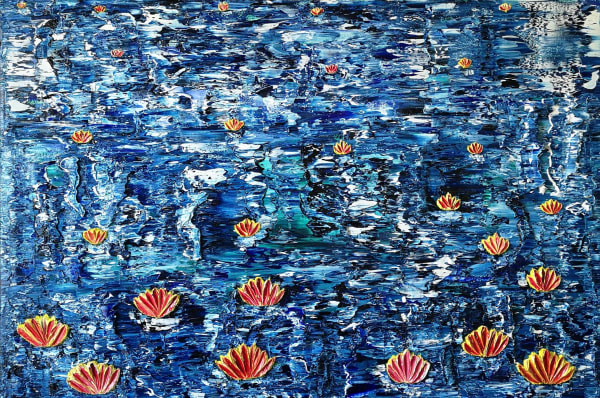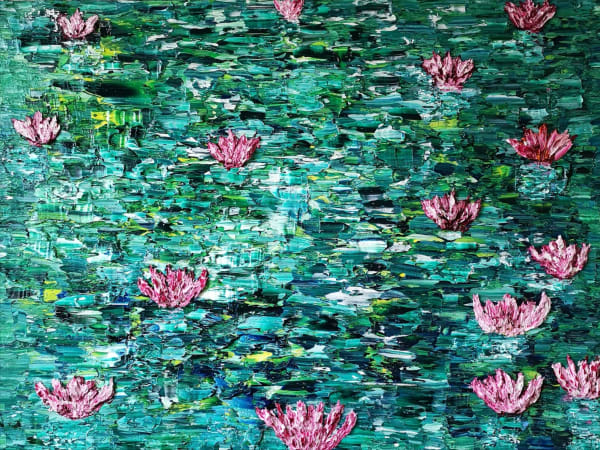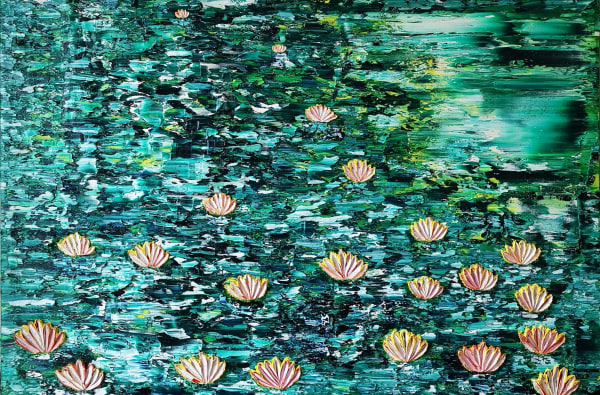Aubrey Higgin
Aubrey Higgin (b. 1993, Cheshire, United Kingdom) currently lives and works in London. He was raised in the Cheshire countryside and received a Bachelor of Arts Degree in Fine Art from Reading University. He has exhibited internationally with Hatch Middle East Gallery (2018) and was selected as one of eight artists for the exhibition ‘Emerging Artists; An Edit’ (2018 ) at London’s Contemporary 45 Park Lane, which was hailed as ‘shaping the future of art’. He has collaborated with a number of charities in his exhibitions, including James’ Place, opened by The Duke of Cambridge. Higgin’s work can be found in private collections internationally, including Geneva, Dubai, Rome and Santa Monica.
Aubrey Higgin celebrates nature in its sublime manifestation: an idyllic landscape charged with unfathomable power. His thick impasto technique and vibrant palette mimics all the magnitude of nature, and triggers the viewer’s deepest sensorialmemories. Whilst Higgin’s use of vivid colours evokes feelings of positivity, vitality and excitement, his paintings are also imbued with a peaceful aura which exudes nostalgia – a longing for the pre-digital age. Inspired by the Impressionists’ use of light, landscape and a vibrant colour palette, Higgin has developed a unique aesthetic.
Aubrey Higgin’s work celebrates nature as an escape from the digitalisation of the modern world. As we experience the world increasingly through a digital lens, we grow distant from nature, losing the opportunity to appraise its unique sense of tactility, depth, and contrast. By employing such idiosyncratic and rich texture in his work, Higgin appeals to the viewer’s senses, helping them to break away from digitaldomination and restore their waning connection with nature. With the skilful use of fantasy and a unique perspective, Higgin redefines nature on the canvas, endowing it with its primordial vitality, rather than merely replicating the landscape visible to the human eye.
Past masters of Impressionism, and in particular Monet, bear significant influence over Higgin’s work. Whilst these influences are recognisable in his practice, he veers away from the formalist Impressionist aesthetic with a contemporary touch, stripping off the details with techniques reminiscent of Gerhard Richter. By abandoning the meticulous attention to details, he allows imagination and memory to freely determine the image, combining order and chance through a thick kinetic application of paint. Higgin thus transforms Monet’s ‘Lilies’ into the likes of a floating island in a sea of light. In this way, the gestural painterly strokes, rather than the composition, become the focal point of Higgin’s work.
Higgin often adopts a vibrant yet minimal colour palette that spans gradients of greens, blues, yellow and reds. The build-up of paint through thick layers of oil grants the work a sheer scale of power and presence that are intrinsic to nature. He deploys unusual tools such as builders' painting knives and horse cleaning brushes to convey the gestural rich textures. Because of the sculptural dimension of paint, Higgin’s works beautifully hover between painting and sculpture. The combination of impasto technique and the often nostalgic and romantic aura expresses an idealisedand primordial representation of reality.






